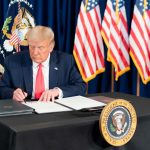As the midnight deadline looms, Washington finds itself in a high-stakes showdown over government funding. The Republican-led House has already passed a stopgap spending bill, but the real battle lies in the Senate, where Democrats hold the key to avoiding a government shutdown. The situation has exposed deep divisions within the Democratic Party, as Senate Minority Leader Chuck Schumer’s decision to support the GOP’s funding measure has sparked outrage among progressives and raised questions about his leadership.
Schumer’s pivot to back the Republican proposal is a calculated move to prevent a shutdown that could harm federal workers and disrupt essential services. However, it comes at a steep political cost. Progressive Democrats, including figures like Alexandria Ocasio-Cortez, have blasted the decision as a capitulation to President Trump’s agenda of slashing federal spending and workforce reductions. For many on the left, Schumer’s support for the bill feels like a betrayal of their core values, further fueling internal discord at a time when party unity is desperately needed.
The GOP’s funding measure extends government operations through September 30 but includes cuts to non-defense spending while maintaining defense budgets. This aligns with Trump’s broader push to streamline federal agencies and reduce government size, a move cheered by conservatives but decried by Democrats as an attack on critical programs. Republicans have framed their proposal as a necessary step to ensure fiscal responsibility, while Democrats argue it gives Trump and his allies unchecked power to dismantle government services.
For Republicans, this moment represents an opportunity to showcase their ability to govern effectively while putting Democrats on the defensive. Senate Majority Leader John Thune has emphasized that Democrats must decide whether to cooperate or bear the blame for a shutdown. The GOP’s strategy of passing the bill in the House and leaving it up to Senate Democrats has placed significant pressure on Schumer and his caucus, forcing them into a politically precarious position.
As tensions escalate, the stakes extend beyond just keeping the government open. A shutdown would furlough hundreds of thousands of federal workers and disrupt services ranging from national parks to air travel security. Economically, even a short-term closure could dent GDP growth and exacerbate uncertainty in financial markets already rattled by Trump’s trade disputes. For Democrats, blocking the funding measure risks being seen as prioritizing political posturing over practical governance—a gamble that could backfire with voters.
Ultimately, this funding fight highlights broader ideological battles over the role of government and fiscal priorities. While Republicans appear unified in advancing Trump’s agenda, Democrats are grappling with internal divisions that threaten their ability to present a cohesive opposition. As the clock ticks down, all eyes are on Capitol Hill to see whether bipartisan cooperation will prevail or if partisan gridlock will plunge the nation into yet another costly shutdown.




